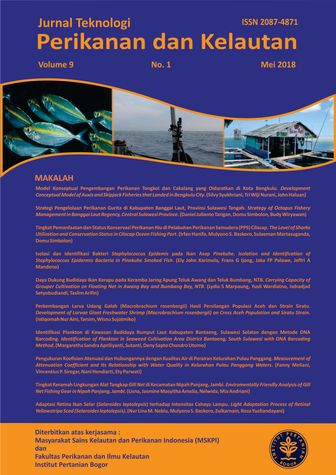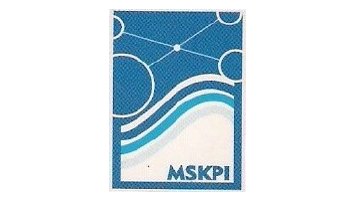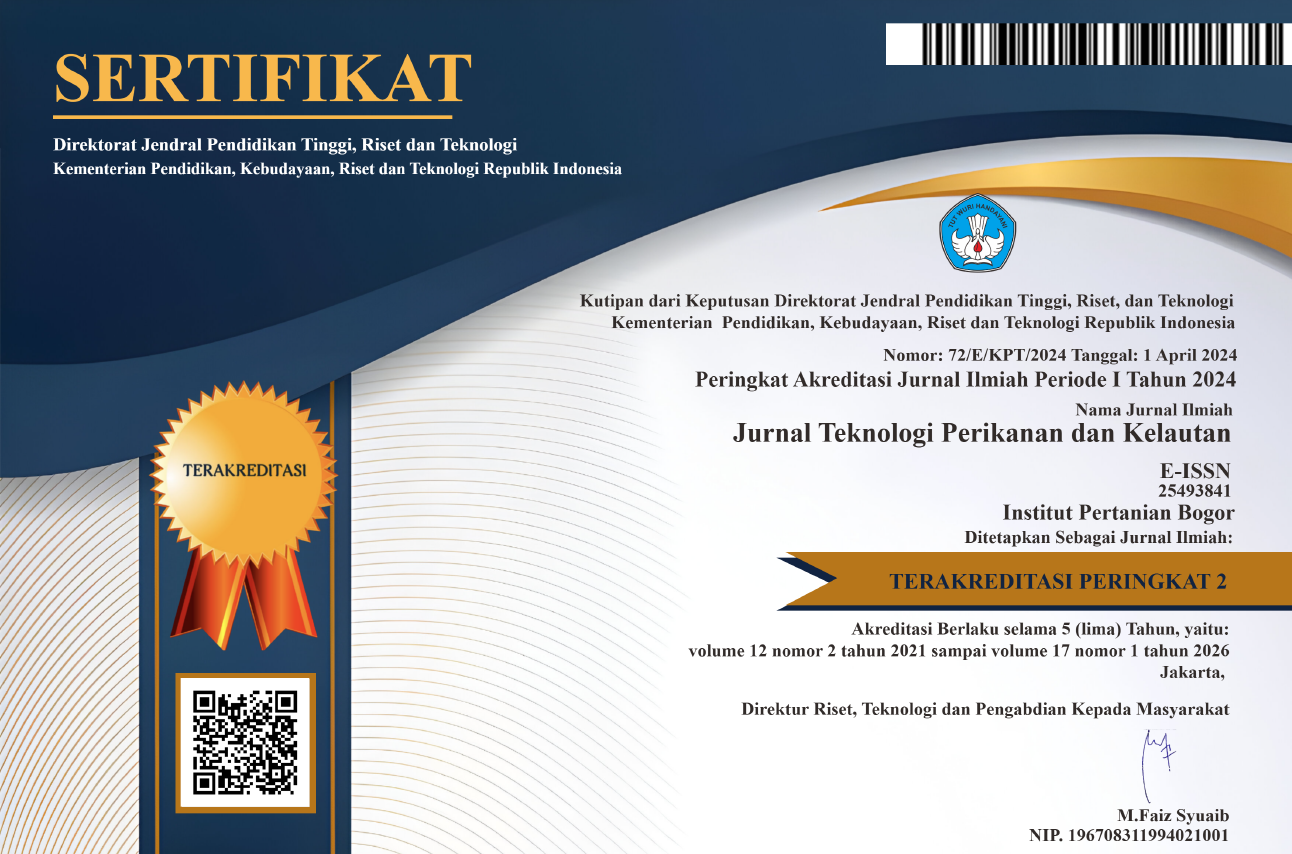PENGUKURAN KOEFISIEN ATENUASI DAN HUBUNGANNYA DENGAN KUALITAS AIR DI PERAIRAN KELURAHAN PULAU PANGGANG
Abstract
Attenuation coefficient is a description of how much light comes down or disappears compared to the light energy on the surface. Reduction of light energy due to absorption and scattering by the water column and the material contained such as phytoplankton, suspended solids and colored dissolved organic matter. The quantity of light that attenuated is equivalent to the amount of light absorbed and scattered. This study aims to analyze the relationship between attenuation coefficients and water quality, as well as to examine the optical characteristics of Kelurahan Pulau Panggang waters. Spectral measurements using TriOS-Ramses which have irradiance sensors with wavelengths between 320 nm to 950 nm and a channel range of 3,3 nm. Calculation of attenuation coefficient (Kd) based on changes in downwelling irradiance at two different depths. To determine the relationship between Kd and water quality, Pearson correlation was used. Based on the wavelength range, Kd is divided into 4 namely Kd PAR, Kd blue, Kd green and Kd red. Kd blue and Kd green have the closest relationship with brightness of 0,5406 and 0,3990 and are negative, while Kd PAR and Kd red are most closely related to suspended solid of 0,4015 and 0,4073 and are positive. The waters of Kelurahan Pulau Panggang are turbid with a Kd PAR value > 0,115 m-1.
Copyright (c) 2019 Fanny Meliani

This work is licensed under a Creative Commons Attribution-NonCommercial-ShareAlike 4.0 International License.





















